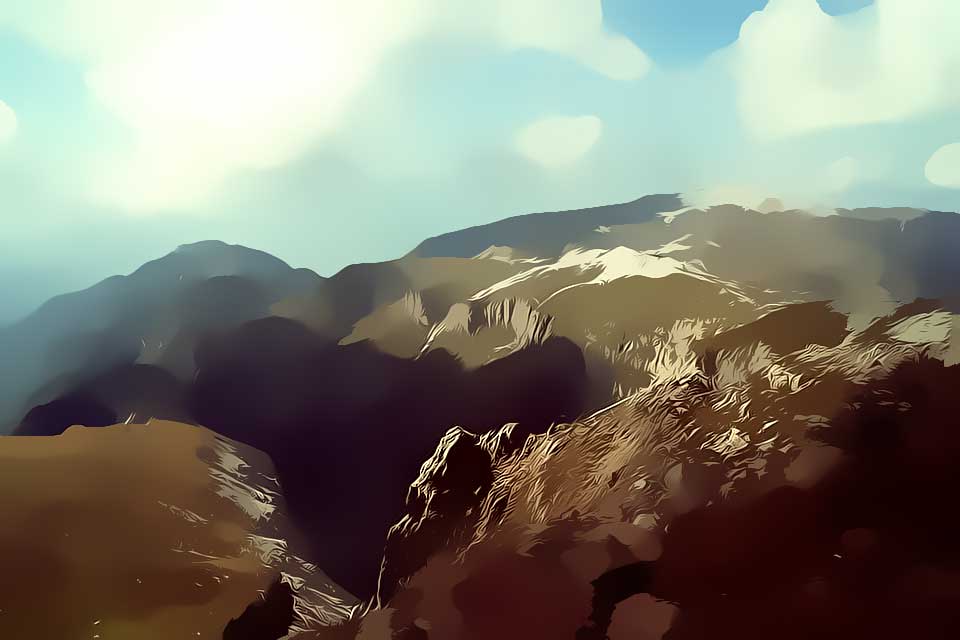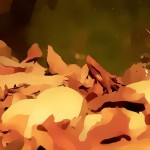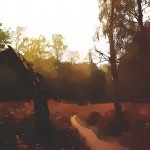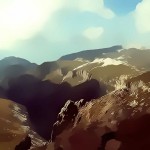Nature Toons

Nature is powerful. Nature is beautiful. Nature is awesome. But what happens when nature looks unnatural, such as with these cartoonized images taken from simple environmental surroundings. Do the images lose their appeal, or do the simplified editions become iconic? Take a look at what the New York Times had to say on when nature looks unnatural and its impact on science (adapted version below).
Nothing makes scientists happier than an experimental outcome that totally contradicts a broadly accepted theory. The scientists who first devised the theory might not be tickled, but their colleagues is likely to be overjoyed. Science advances when a great theory is superseded by an even better theory, as well as the most direct path to establishing a better theory will be confronted by data that simply don’t match the outdated one.
Nature is not always so kind, however. Areas like particle physics and cosmology sometimes contain good theories that fit all of the data but nonetheless appear unsatisfying to us. The Hot Big Bang product, as an example, which posits that the early universe was quickly growing, and hot, dense, is an exceptional fit to cosmological information. But it starts by assuming that the distribution of matter began in an incredibly smooth configuration, spread almost homogeneously through space. That state of affairs seems to be extremely unnatural. Of all ways matter might have already been dispersed, the overwhelming majority are wildly lumpy, with dramatically distinct densities from place to spot. The original conditions of the universe look uncanny, or “well tuned,” never as when they were set at random.
Great scientific theories can fit all the data but nonetheless seem unsatisfying to us.
Faced with hypotheses that match all of the data but look abnormal, you can definitely shrug and say, “Perhaps that is only the way it’s.” But most physicists take the approach that practically none of our present models are precisely right; our finest notions are still approximations to the underlying reality. In that case, apparent fine-tunings may be taken as potential clues that might prod us into building improved theories.
Guth’s proposition was that the incredibly early universe was dominated for a period by a mysterious type of electricity that made it grow in a super-accelerated speed, before that energy after converted into ordinary particles of matter and radiation. We don’t know exactly what the source of that electricity was, but physicists have a number of plausible candidates; in the meantime we simply call it “the inflaton.” Unlike issue, which tends to clump together underneath the force of gravitation, the inflaton works to loosen up space and also make the distribution of electricity increasingly smooth. By time the energy in the inflaton converts in to regular particles, we have been left having a hot, dense, easy early universe: just what’s needed to get the Huge Bang design off the bottom. If rising prices took place, the smoothness of the first universe is the most natural thing in the planet.
Inflation has changed into a starting-point for much contemporary theorizing regarding the start of the universe. Cosmologists both work to elaborate the details of the design, or struggle to locate a workable alternative. These gravitational waves really are a primary prediction of rising prices.
The hypothesis of cosmic inflation was prompted by the straightforward want to really have a more natural explanation of the first universe.
Cosmic inflation is an outstanding extrapolation. And it was prompted not by any direct contradiction between theory and experimentation, but by the straightforward desire to truly have a more normal explanation for the conditions of the early universe. In case these observations favoring inflation hold up — a large “if,” of course — it will symbolize an enormous triumph for logical thinking founded on the search for naturalness in bodily explanations.
The victory, regrettably, is not a totally clean one. If inflation occurs, the states we find in the first universe are fully natural. But is the event of inflation itself entirely natural?
That depends. The first expectation was that rising prices would naturally appear as the early universe expanded and cooled, or maybe that it’d only begin someplace (even if maybe not everywhere) as a result of chaotically fluctuating first states. But nearer examination shows that rising prices itself needs an incredibly specific starting point — states that, one has to say, seem to be fairly delicately tuned and unnatural. From this standpoint, inflation by it self does not entirely clarify the first universe; it just alters the kind of explanation we’re seeking.
Luckily — maybe — there is a complication. Soon after Guth proposed rising prices, Andrei Linde and the physicists Alexander Vilenkin pointed out that the process of rising prices can go on eternally. Instead of the inflaton power converting into ordinary particles all through the universe, it could convert in a few areas but not others, making localized “Big Bangs.” Elsewhere rising prices continues, eventually creating other separate “universes,” eventually an endless number. From an effort to explain states in the only universe that people see, cosmologists wind up calling a “multiverse.”
This may seem like quite a peculiar result. But in the headlines conference after last week’s declaration, equally Guth and Linde suggested that evidence for rising prices boosts the case for the multiverse. And maybe the multiverse requites the favor. The fundamental laws of physics obey the rules of quantum mechanics: Rather than predicting certain outcomes, we attach probabilities to members of an ensemble of several distinct experimental results. If rising prices begins in any portion of the quantum thermodynamic ensemble, which inflation goes on eternally, it produces an infinite amount of individual universes. Therefore, even if rising prices itself looks unlikely, multiplying by the endless amount of universes it creates makes it quite possible that people find ourselves in a post-inflationary scenario.
You aren’t alone, if you locate the logic of the previous paragraph less than perfectly convincing. Not that it’s clearly erroneous; but it is maybe not obviously appropriate, either. The multiverse thought represents an important shift in the philosophy underlying inflation: Rather than describing why we live precisely in this sort of cosmos, endless inflation declares there are many types of neighborhood universes, and expresses the hope that types like ours tend to be more likely than other sorts.
Maybe they’re. Now, nevertheless, we just do not understand the way to do the mathematics. The multi-verse is a provocative situation, but the unique models that forecast it are very tentative, much from the pure rigor one expects of a mature physical theory. How many universes are there? How do we determine which sets of conditions are most “likely” within the enormous ensemble of possibilities? How do we balance the inborn odds of quantum mechanics together with the possible unlimited proliferation of local areas? Does entirely everything occur inside the multi-verse, or are just some possibleness actually realized?
The questions are challenging, but they are perhaps not always hopeless. Physical theories are frequently obscure when first proposed, and just come in to focus after a great deal of effort. The multi-verse, in its contemporary cosmological guise, has the same origin. It’s that the equations we invented to describe observational data (the smoothness of our first conditions) ended up pointing in the direction of this provocative possibility, and it is the obligation of scientists to take the forecasting of these models as critically as potential.
Naturalness is a subtle standard. In the case of inflationary cosmology, the drive to find a natural theory appears to have paid off handsomely, but possibly other seemingly unnatural attributes of our world must just be accepted. Ultimately it is nature, maybe not us, that determines what’s normal.






Recent Comments